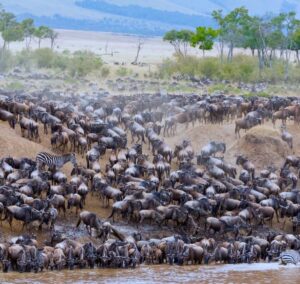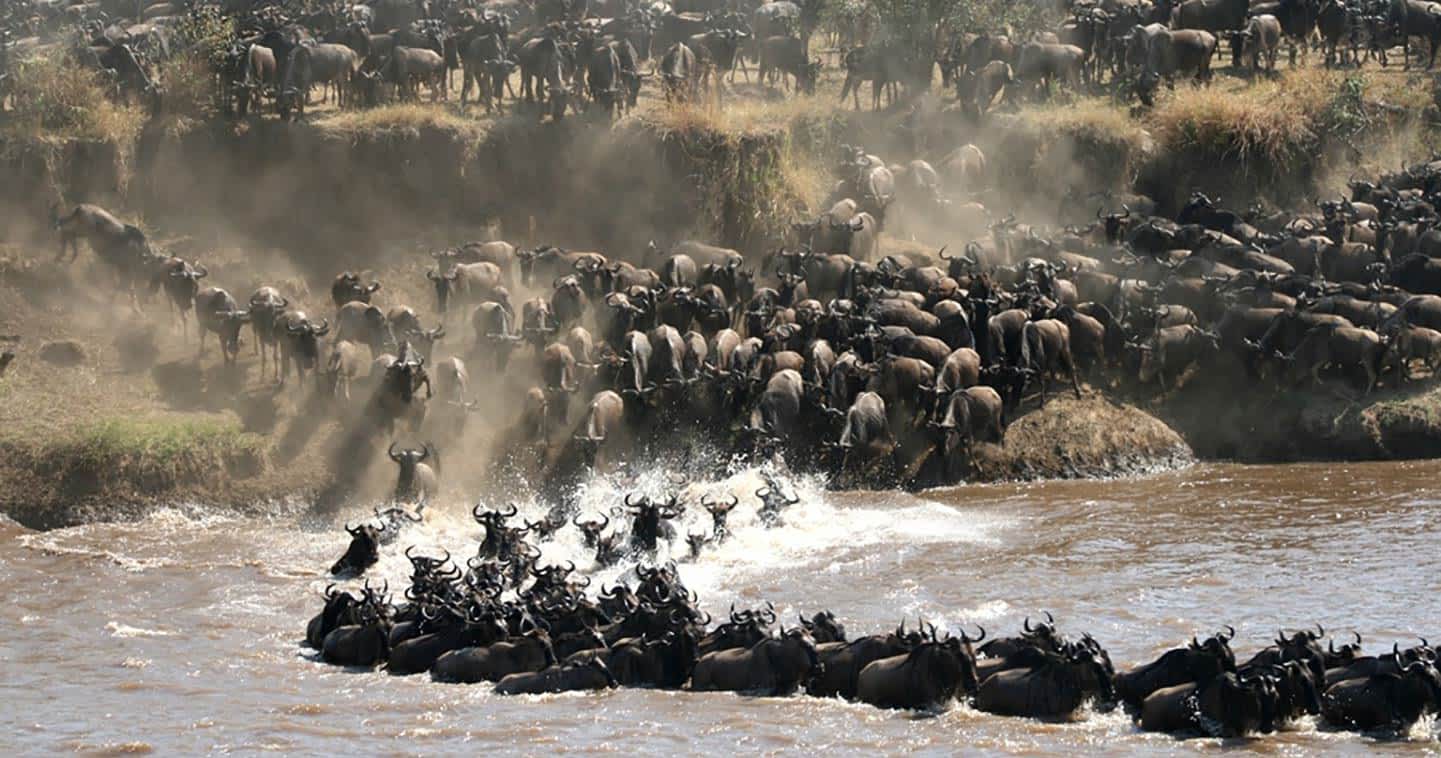Wildlife Wonders of the Serengeti National park. The Serengeti National Park stands as one of Africa’s most iconic wilderness areas, spanning nearly 15,000 square kilometers of pristine savannah in northern Tanzania. For those planning a short Tanzania safari, this UNESCO World Heritage Site offers unparalleled wildlife viewing opportunities that can transform even a brief visit into an unforgettable experience.
The Great Migration: Nature’s Greatest Spectacle

The Serengeti is synonymous with the Great Migration, arguably the most spectacular wildlife event on Earth. Each year, over 1.5 million wildebeest, accompanied by 200,000 zebras and 300,000 Thomson’s gazelles, undertake a circular journey following ancient rainfall patterns. This continuous movement creates different viewing opportunities throughout the year, making the Serengeti exceptional regardless of when you visit.
Between January and March, the southern Serengeti plains transform into calving grounds where approximately 8,000 wildebeest are born daily. This period attracts numerous predators, offering exceptional opportunities to witness hunting behavior. From April to June, the herds begin their northwestern journey toward the Grumeti River, while July through October sees dramatic river crossings where crocodiles lie in wait. The cycle completes as herds return southward between November and December.
The Big Five and Beyond
While the migration captivates visitors, the Serengeti’s resident wildlife populations are equally impressive. The park harbors substantial populations of Africa’s Big Five—lion, leopard, elephant, buffalo, and rhinoceros—though black rhinos remain critically endangered and rarely spotted.
Predators Rule the Plains
The Serengeti boasts the highest concentration of lions in Africa, with an estimated 3,000 individuals distributed across numerous prides. These apex predators have adapted remarkably to the open grasslands, often hunting cooperatively to bring down wildebeest and zebras. Visitors on Tanzania safari and tours frequently witness lions lounging on kopjes—granite rock formations that provide vantage points for surveying their territories.
Leopards, though more elusive, inhabit the park’s riverine forests and rocky outcrops. These solitary hunters are most active during dawn and dusk, often hoisting their kills into acacia trees to protect them from scavengers. The Seronera Valley region offers particularly good leopard sighting opportunities.
Cheetahs thrive on the Serengeti’s open plains, where their extraordinary speed—reaching up to 120 kilometers per hour—can be fully utilized. The southeastern plains provide optimal viewing, especially during the migration calving season when vulnerable newborns attract these sleek predators.
Spotted hyenas, often misunderstood as mere scavengers, are actually skilled hunters responsible for up to 95% of their own kills. The Serengeti supports one of Africa’s largest hyena populations, with powerful clans sometimes numbering over 80 individuals. Their distinctive whooping calls echo across the savannah at night, creating an authentic African soundscape.
Herbivore Diversity
Beyond the migratory species, the Serengeti hosts impressive resident herbivore populations. Elephants roam in family groups, particularly concentrated in the northern woodlands where mature bulls can weigh up to 6,000 kilograms. Buffalo herds, sometimes numbering thousands, graze the grasslands year-round, their massive presence shaping vegetation patterns.
Giraffes browse acacia trees across the park, with the Serengeti population representing primarily the Masai giraffe subspecies, distinguished by their irregular spot patterns. Topi, kongoni (Coke’s hartebeest), Grant’s gazelles, and impalas add to the remarkable ungulate diversity.
Primate and Smaller Mammal Populations
The kopjes and riverine forests shelter olive baboons and vervet monkeys, while the elusive black-and-white colobus monkey inhabits forested patches. Rock hyraxes, surprisingly related to elephants, sun themselves on granite outcrops. At night, genets, civets, and various mongoose species emerge, alongside nocturnal hunters like servals and caracals.
Avian Abundance
Bird enthusiasts will discover over 500 recorded species, making the Serengeti exceptional for ornithological exploration. Ostriches—the world’s largest birds—stride across open plains, while kori bustards and secretary birds hunt for reptiles and insects. Raptors dominate the skies, including martial eagles, tawny eagles, and bateleur eagles.
The park’s wetlands and seasonal pools attract numerous waterbirds. Sacred ibis, Egyptian geese, and various heron species congregate around water sources, while massive flocks of flamingos occasionally appear when conditions are favorable. Lilac-breasted rollers, superb starlings, and Fischer’s lovebirds provide brilliant splashes of color against the golden grasslands.
Reptiles and Amphibians

Nile crocodiles patrol major rivers, particularly the Grumeti and Mara, growing up to five meters long. These prehistoric predators play crucial roles during migration river crossings. Rock pythons, puff adders, and black mambas inhabit various ecosystems, though snake encounters remain relatively rare. Agama lizards bask on rocks displaying brilliant blue and orange breeding colors, while monitor lizards patrol riverbanks.
Planning Your Serengeti Experience
The diversity and density of Serengeti wildlife mean that even short Tanzania safari and tours yield remarkable sightings. Most visitors combine the Serengeti with Ngorongoro Crater and other northern circuit parks for comprehensive wildlife experiences. The park offers various accommodation options from luxury lodges to mobile tented camps that follow the migration.
Game drives remain the primary wildlife viewing method, though hot air balloon safaris provide spectacular aerial perspectives at sunrise. Walking safaris in designated areas allow intimate encounters with smaller ecosystems often overlooked from vehicles.
Conservation Success Story
The Serengeti represents a conservation triumph, maintaining ecological integrity despite challenges from poaching and human-wildlife conflict. Ongoing research projects continue revealing insights into predator-prey dynamics, migration patterns, and ecosystem health, ensuring this natural wonder endures for future generations.
Whether witnessing a lion pride’s coordinated hunt, observing thousands of wildebeest thundering across the plains, or simply watching elephants at sunset, the Serengeti delivers wildlife encounters that exceed imagination and create lifelong memories.
Planning your short Tanzania safari, look no further than Cycads African Safari to help you craft the perfect tour. Our experienced team specializes in creating personalized wildlife experiences that maximize your time in the Serengeti while ensuring comfortable, seamless travel arrangements. Whether you’re dreaming of witnessing the Great Migration, tracking the Big Five, or simply immersing yourself in Africa’s most spectacular wilderness, we’re here to transform your safari dreams into reality. Contact us today by calling +1 818-290-6623 or emailing info@cycadssafaris.com to start planning your unforgettable Serengeti adventure.


